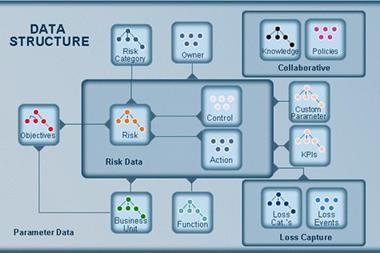Police officer, teacher, counsellor and leader – AIRMIC's new chairman!
Chief risk officers outside the banking industry are still unusual, and those in professional services firms are rarer still. The new chairman of AIRMIC, Julia Graham, is a member of this select group. She went into the insurance industry from school and was promoted through a number of roles until eventually she became risk manager for the Royal Insurance Company and then the combined Royal & Sun Alliance Group, now RSA. She joined the law firm DLA Piper in March 2004.
There is no template for her current job. She describes it as a combination of police officer, teacher, counsellor and business leader, a description from the article by Mike Wilkinson which appeared in the May edition of Strategic Risk.
What soon becomes clear from speaking with her is that her role has the personal and direct support of the board chairman, who is the senior partner. He also chairs the firm's new risk committee. Graham has a direct reporting line to him and meets him regularly. When there is a problem or a board decision is needed, she stands just below him in the escalation ladder. She also has direct contact with the managing director and notably the chief operating officer. Graham also receives guidance from the risk committee and reports to the board once a month.
It is an international role and one which, by way of three teams, covers all the important risk issues of a big professional partnership. One team is a senior level policy making group that deals with such critical issues as setting frameworks for client engagement and conflicts of interest, insurance, regulatory issues, compliance and business continuity.
Second, there are regional development managers, whose role is to act as account managers, apply the firm's international policies and make sure they work on the ground, including adapting them to local regulatory and business requirements. With DLA Piper offices in 25 countries, Graham is very conscious of the cultural context for risk management.
The third team she refers to as central services. It is a multi-disciplinary team of 20 people who handle the application of client identification procedures, anti-money laundering regulations and conflicts of interest.
“After 35 years, she still loves her work.
Insurance remains part of her job, at least at the framework and problem solving level. She makes no apology for it, even though there has been some pressure in the profession to separate risk management and insurance buying. She points out that the two are part of the same process.
Theme for the year
As the theme for her year as chairman and for the annual conference of 2009, Graham chose promoting the risk manager. She believes that the risk manager must be in a position where he or she is recognised as a senior and independent voice in an organisation and not relegated to a back of the house role. AIRMIC, as the association that represents risk managers, also needs to be visible, by means such as its sponsorship of research on enterprise risk management (ERM).
The second part of promoting the risk manager relates to the professional development of individual risk managers, and the skills and training that they need. Graham believes that AIRMIC should help its members achieve the competence and standing they need to occupy a senior level position.
After 35 years, Graham still loves her work. Despite the demands of the job, she takes on projects like the chairmanship of AIRMIC, her book on business continuity with David Kaye, work on the British Standard code of practice for risk management and possibly another book to give back something to the profession that has given her so much over the years.














